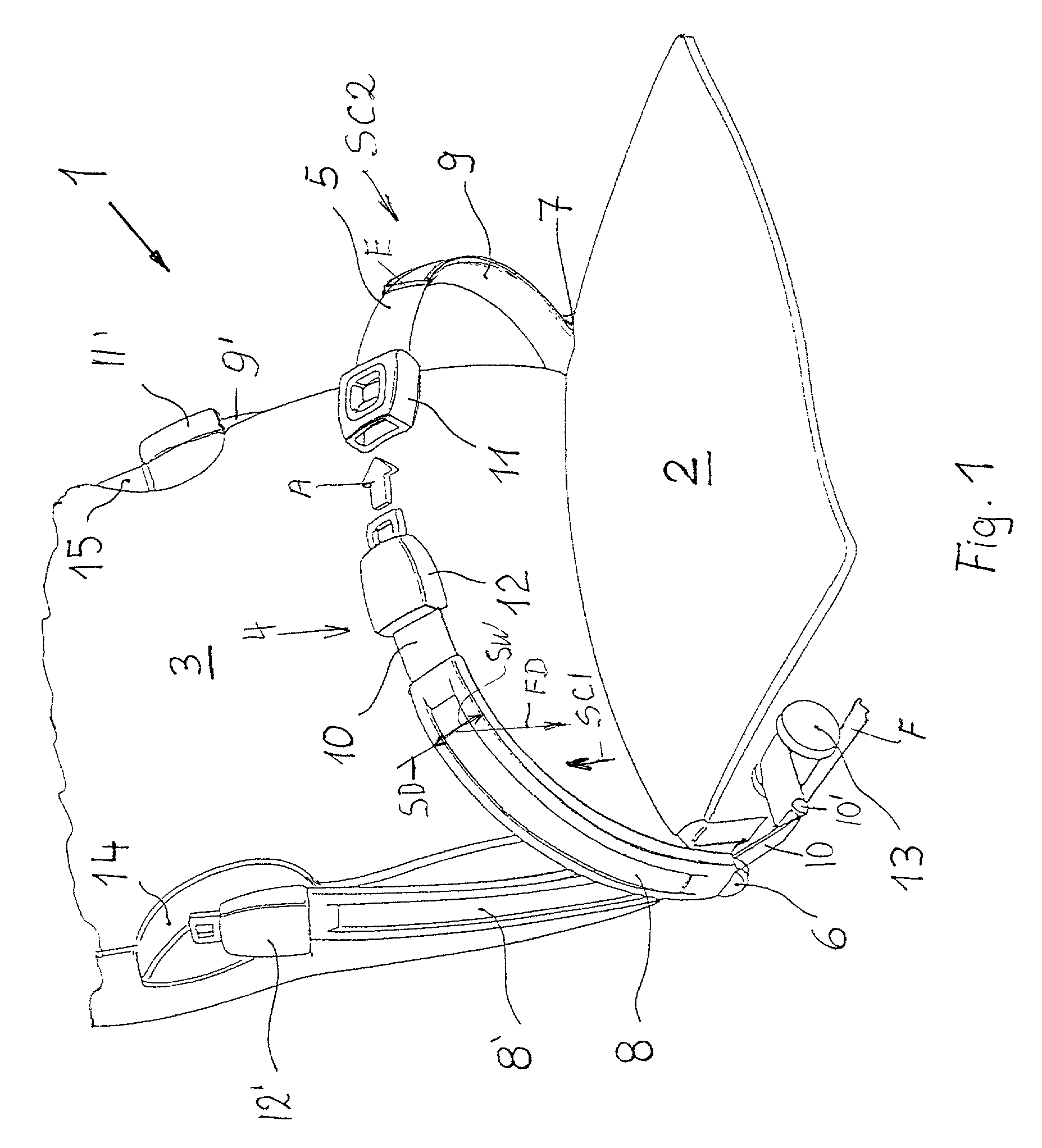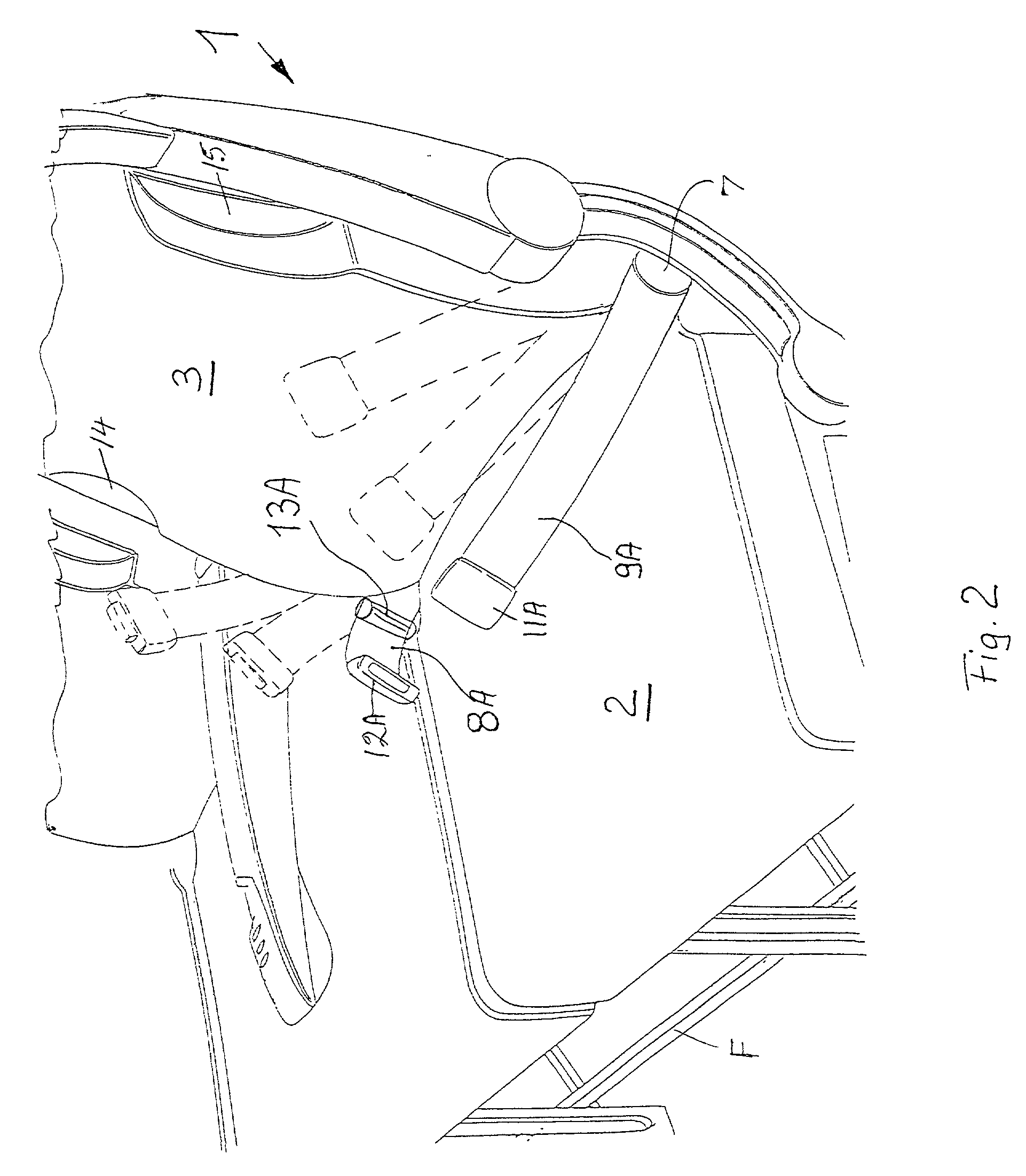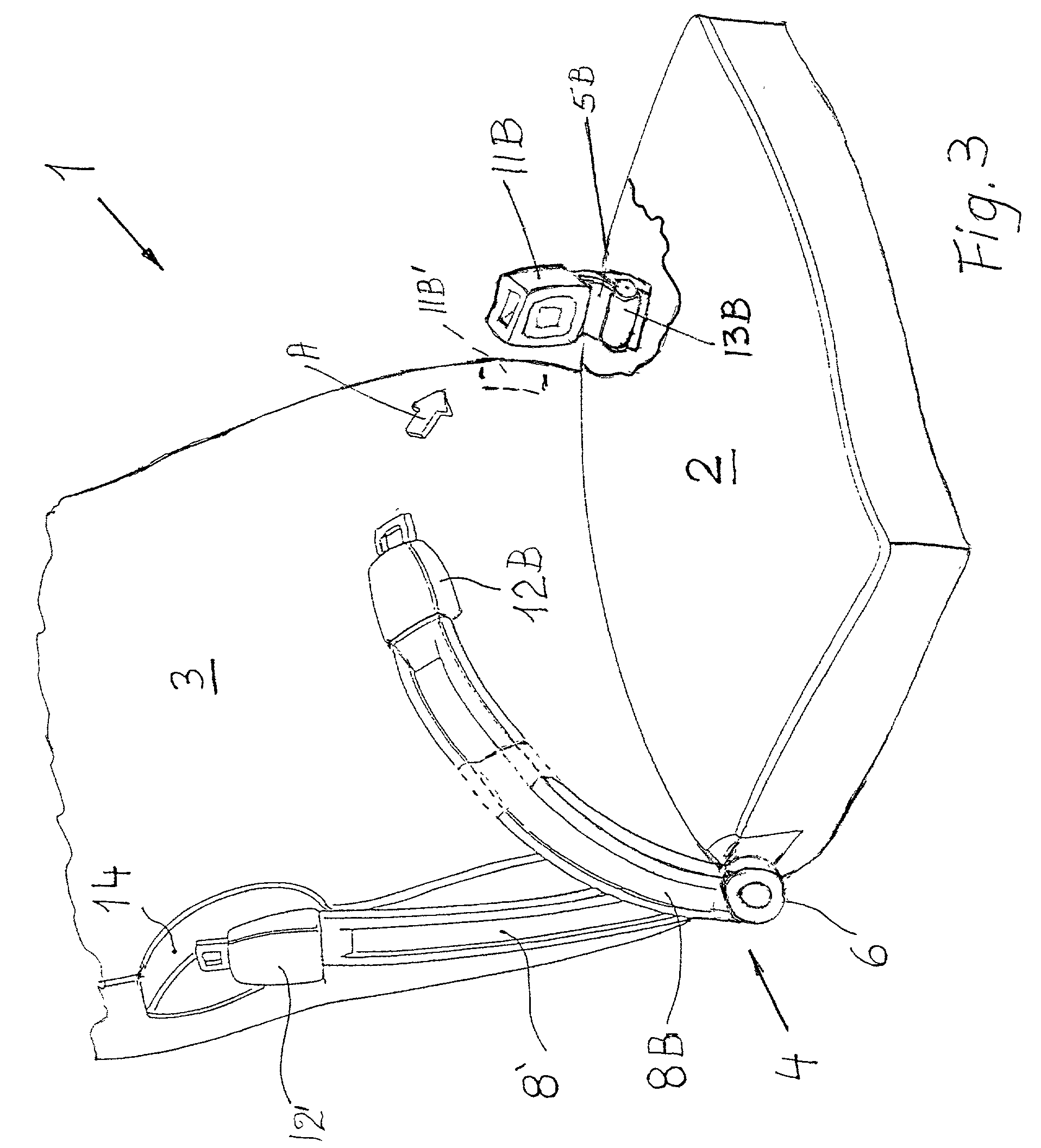Passenger chair and safety belt system for such a chair
a passenger seat and seat technology, applied in the direction of vehicle safety belts, v-belt fastenings, belt fastenings, etc., can solve the problems of limp belts and therefore difficult to handle, time-consuming efforts to find belt ends, and part of the cabin preparation for the next flight is rather time-consuming, so as to reduce the effort and expense, reduce the ground time of aircraft, and facilitate the seat for passengers
- Summary
- Abstract
- Description
- Claims
- Application Information
AI Technical Summary
Benefits of technology
Problems solved by technology
Method used
Image
Examples
Embodiment Construction
[0016] FIG. 1 shows a passenger chair 1 equipped with a safety belt system 4 for use, for example, in an aircraft passenger cabin. The chair comprises a seat 2 and a backrest 3 supported or mounted on a frame F. The system 4 comprises a first safety component SC1 and a second safety component SC2. The first safety component SC1 comprises a first sheath 8 having a controlled flexibility, a first lap belt member 10 guided in the sheath 8, and a lock element 12 secured to a free end of the belt member 10. The first safety component SC1 further includes a conventional belt roll-up mechanism 13, preferably mounted to the frame F or to the seat 2 in a recessed position. A pivot or journal 6 connects the lower end of the sheath 8 to the chair, preferably to the lower end of the backrest 3. A guide roller 10' is mounted in such a position that it will properly guide the belt member 10 into the sheath 8.
[0017] When the belt member 10 is fully rolled-up so that the lock element 12 bears again...
PUM
 Login to View More
Login to View More Abstract
Description
Claims
Application Information
 Login to View More
Login to View More - R&D
- Intellectual Property
- Life Sciences
- Materials
- Tech Scout
- Unparalleled Data Quality
- Higher Quality Content
- 60% Fewer Hallucinations
Browse by: Latest US Patents, China's latest patents, Technical Efficacy Thesaurus, Application Domain, Technology Topic, Popular Technical Reports.
© 2025 PatSnap. All rights reserved.Legal|Privacy policy|Modern Slavery Act Transparency Statement|Sitemap|About US| Contact US: help@patsnap.com



